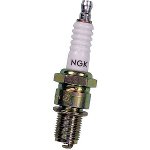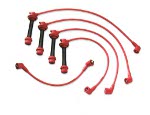How to Change Your Spark Plugs
Author: steve Published Under: Automobiles

In your car, the spark plugs play an essential role. As the engine turns, the spark from the spark plug ignites the gas in the engine, turning the pistons. A malfunctioning or dirty spark plug can dramatically reduce performance and even cause damage to the engine, so it is important to regularly inspect and replace your spark plugs.
Before removing your spark-plugs, make sure that you buy some new ones at the auto-parts store. There are many to choose from and one popular type are ones that have multiple spark points, often up to four points. I prefer the single or at most double spark points, as they work well and anything else is very pricy and not really needed for a regular car.
When purchasing spark plugs, it is a good idea to find out what the manufacturer suggest. For instance, Ford uses Motor Craft Spark Plugs and Toyota's usually use NGK Spark Plugs, so going with the manufacturers recommended brand is a good idea.
You will also need a special socket to remove the spark plug, as well as possibly a long extension for your ratchet. The special spark plug socket has a piece of rubber in the top of it, which grabs the spark plug so that you can pull it out of the engine. Some vehicles, especially vans, can be quite tricky to get to and a flex joint can help make it easier to get the right amount of leverage in a small spot.
Removing and Replacing the Spark Plugs
Since the order of the spark plug wires is essential, it is a good idea to change your spark plugs one at a time. This way, you do not risk putting the wrong wire on a spark plug. It is also a good idea to wait until the engine is completely cool, as the spark plugs and engine block can become very hot, even after only driving for a short period of time.
 First, remove the spark plug wire by carefully grasping it with your hand or a pair of needle nose pliers. Wiggle the wire back and forth while lifting upwards and it should pop right off. You want to be careful, however, because it is easy to damage the wire when pulling it off.
First, remove the spark plug wire by carefully grasping it with your hand or a pair of needle nose pliers. Wiggle the wire back and forth while lifting upwards and it should pop right off. You want to be careful, however, because it is easy to damage the wire when pulling it off.
Once the wire is removed, place it out of the way and remove the spark plug with the special spark plug socket. It is a good idea to put the socket on an extension and holding the end of the extension, put the socket onto the spark plug. Keep in mind that because of the rubber on in the spark plug socket, it may feel like it is on or be a little tougher to put on than a regular socket. Loosen the spark plug and once it is completely loose, you should be able to simply pull it out.
Visually inspect the spark plug and if it is damaged, keep track of which cylinder you pulled it out of.
When replacing the spark plug, insert it on the spark plug socket and insert into into the cylinder. Even though the rubber of the spark plug socket works well to hold the spark plug, be careful not to let it drop on the floor, which can damage the spark plug.
Also, be careful not to over tighten the spark plug, as it does not need to be too much more than hand tight. If you are at all unsure of how tight it should be, use a torque wrench and tighten the spark plugs to the manufacturers recommendation, which the auto parts store will be able to tell you and is also likely in your vehicles manual.
Once the spark plug is in place, carefully replace the spark plug wire with your hand, ensuring that it is firmly seated on the spark plug. You also want to make sure that the seal around the spark plug cylinder is tight and that the wire is correctly seated around the seal.